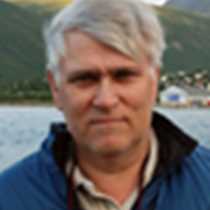Bornholm
Today, in a gusting and brisk wind from west, we ventured to the easternmost tip of Denmark – Christainsø off Bornholm – and anchored by Østerskær. After some scouting in the strong wind, it was decided to use our fleet of Zodiacs to take us ashore.
This was not always the easternmost tip of Denmark. Denmark was the first “empire” to rule over the Baltic in mediaeval times and stretched as far east as modern Estonia. The Danish flag, Dannebro, was in fact adapted as the national symbol in1219 during a battle in what is now Estonia and is today, by far, the oldest national flag still in use in the world. It also became the model for all other Scandinavia countries as they established their own national flags. The “Nordic Cross” in different colors is set on all the different national flags and, interestingly enough, even Finland has chosen this model, although it’s not a Scandinavian country.
Bornholm is a large island in the Baltic, with Christainsø even further east, and is by far the most eastern Amt (province) of Denmark, well isolated from the mainland. From the northern tip of Bornholm you can see the shoreline of southern Sweden. The island Christainsø is as much a fortification built by one of many kings in Denmark named “Christian.” In fact, nearby lays Frederiksø, named after Fredrik which also is a common name for Danish kings from mid 15th century. The fortification was erected after the peace treaty at Roskilde in1658, mainly to keep an eye on Sweden, which was rapidly expanding to become the 2nd “empire of the Baltics in the late 1700s.
Ashore on the island, we all used the time to explore this simple and still attractive area with its small houses and gardens. For the keen birders an odd gannet totally astray from the Atlantic was sitting on the pier. Also here is one of the oldest Danish bird observatories and some were able to talk with the ornithologist, who is doing studies on how magnetic fields are used by migratory birds.
Over lunch the ship took us closer to Bornholm and soon again we ventured into our Zodiac fleet to take us ashore in the very northeastern corner of the island, at the quaint small harbor and village Allinge. Here we split up into three different groups depending on interest. One group went up towards the very northern tip of Bornholm and hiked along the windy coast, south to the castle Hammerhus. The second group left to visit a local glass artist. The third went on a tour to explore the coastline, some more villages and round churches and also ended up at the castle.
Bornholm is very much about agriculture and has formed the landscape since the early Bronze Age. The landscape is very pastoral, with small fields, small farm houses and small villages. All villages are mainly located along the coastline. Being an island in the southern Baltic Sea, fishing has always been a base for survival, with cod, eel, salmon and – most important – herring to be the traditional fishes to catch.
Preserving food for the long winter was an issue before the invention of refrigerators and freezers. In northwestern Europe you will find a long tradition of different recipes for herring and here at Bornholm, smoked herring was a staple food.
Old-fashioned food for the common people has here, like many other places, become today’s delicacy. All groups got the opportunity to taste smoked herring and some good tasty Danish beer before we all returned to Allinge and back to our ship.
We have now visited eight different countries on our Baltic odyssey, with large busy cities, some smaller towns and villages, and zodiac cruises through industrial areas, but the green pastoral Bornholm stands out as being delightful and very pleasant for anyone who wants to escape the busy everyday life around us. Bornholm is for sure a very peaceful place. Nu tar vi en lille en! SKÅL!




